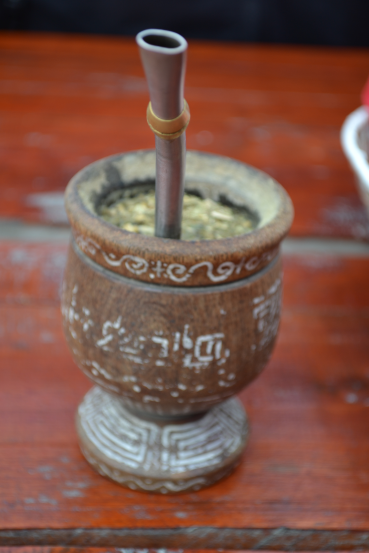The facts that time waits for no men, that tomorrow is not guaranteed, and that fears is nothing but of itself, I planned my first self-guided trip to Brazil and Argentina with zero Spanish.
Like any other international trips, a good planning is the key, except this may take longer and require more patience. To compensate my language barrier, I practically prebooked everything I wanted except the Channel Beagle tour, and also came up with a Plan B if things faltered. Thankfully everything went as planned.
Visa
For Americans, visitor visa is required for visiting both Brazil and Argentina, but not required for Chile. Be ready to pay a whopping of $160 USD for each visa.
Hotel/Hostel
Hotel, B&B, or hostel? The answer lies on your travel style, your budget, and perhaps the types of people you wish to meet. Both are common and both provide different ambience. We chose hostels and B&B for its homey ambience and helpful staff. Most hostels now offer private room (for 2 people) with private bathroom for a price lower than that of a hotel. Another advantage to stay in a hostel is the luxury of the community kitchen, whereby you can cook a meal with local produce, should you need a break from the restaurant food. Normally, the hostel price per dormitory bed ranges from $15 USD and upward. The private room is $45 USD and up, more expensive in the Patagonian area.
The hostels we chose have English-speaking staff, and that helped tremendously when asking for recommendations.
How to reserve the local tour packages?
Planning can be challenging with zero spanish as most tour agency websites are in Spanish. Emails to them in English were either not replied or replied untimely. The great news is that most hostels, or at least the hostels I stayed at, in South America (SA) are very helpful. My other posts on Argentina will provide more information. They normally have tour packages ready for their clients. Just ask when/after you have made your reservations. I asked prior to making my reservations. In other words, you could book your local tour packages before boarding your flight there. So, don't let the language barrier stop you from visiting this vast and yet beautiful continent.
Air Ticket
Granted, the airfare to SA is not cheap, but it can be cheaper depending on how you purchase it. You may actually save hundreds of dollars if you split your whole journey into different legs and buy separate tickets for some legs. Miami, Houston, and New York City are three major hubs flying into Argentina. Therefore for those not living in those cities, you might want to consider buying the round-trip domestic ticket to the hub city and then another ticket for the international legs from the hub city. For example, I saved USD $700 by buying a round-trip domestic ticket from Chicago to New York City ($230), and the rest in another ticket ($1260) instead of paying $2300 in one ticket.
The online review of Aerolineas Argentina was rather negative, but my actual experience on seven different Aerolineas Argentina flights is impressively good. Their puntuality, new aircrafts, and luggage handling were good.
Side note: Aerolineas Argentina provides its passengers free shuttle bus service for their connecting flight at AEP airport from EZE International airport, which is 45 minutes away. You may also request the bus driver to drop you off in Buenos Aires downtown on the way to AEP, if you have long layover at AEP.
Restaurants
Food at any restaurants in Argentina is not cheap due to the rampant inflation. A nice sit down meal with steak/lamb and wine can easily cost at least $35 USD. They do charge mineral water for at least $1.50 USD per little bottle.
It is true that most menu is in Spanish only, except restaurants that are highly frequented by foereign tourists. Most restuarants are equiped with WIFI, so with a smart phone, you could tap into any apps for translation. Most waiters/waitresses were patient and willing to explain and help.
Tips, while is not mandatory, is desirable. Some restaurants explicitly state the percentage they wish to be tipped in the first page of their menu, but I followed tripadvisor's advise by tipping just 10%.
Transportation:
Travels within city, local buses and taxies are good options. Most taxies are metered. However, any travels from the airport to the town center and vice-verse, it is always best to ask for a price first before boarding the taxi to avoid being overcharged. Most taxi driver are willing to quote you a fixed price. Argentina is a big and long narrow (from North to South) country, therefore another option would be to fly from point A to point B for time saving purpose. For example, it might make sense to spend more and fly from Buenos Aires to El Calafate (Patagonia) on a four-hour flight rather than days of travel in bus.
Money:
Due to the huge Argentina Peso currency depreciation, US greenback is in high demand. Most restaurants/grocery stores take both credit card and cash in US dollar. In my experience, for reasons unknown to me, they favor $100 bill more than any other US dollar denominations, and are willing to give you a better exchange rate. So, do bring some cash. The Blue rate is a lot better than the bank official rate, some is even unbelievably 50% better.
Happy planning and happy travel...
P/S: I went to Argentina and Brazil in January of 2015. Glad that I had overcome my fear of language barrier..
blog comments powered by Disqus

